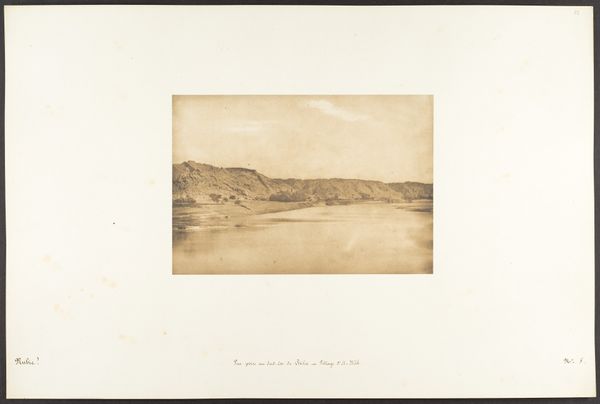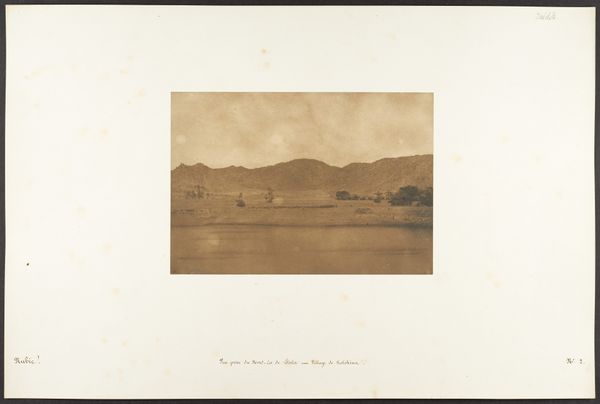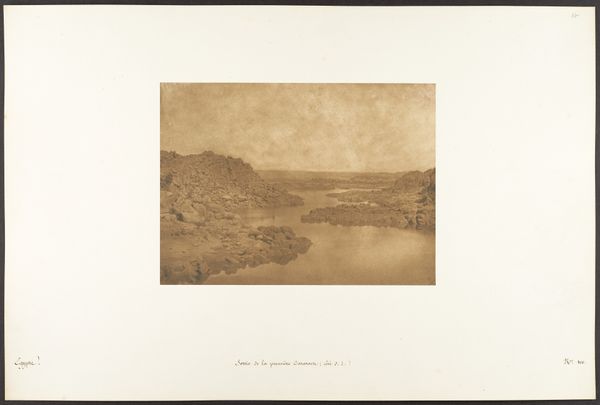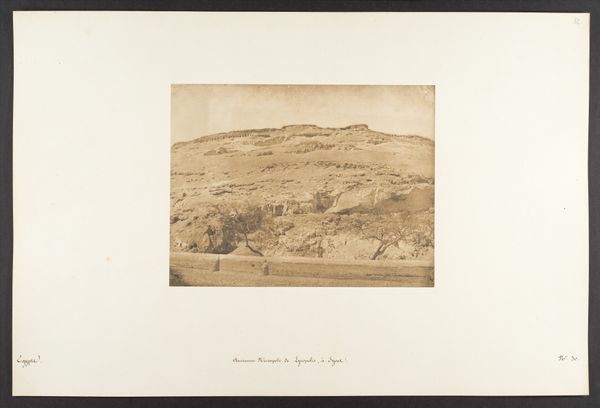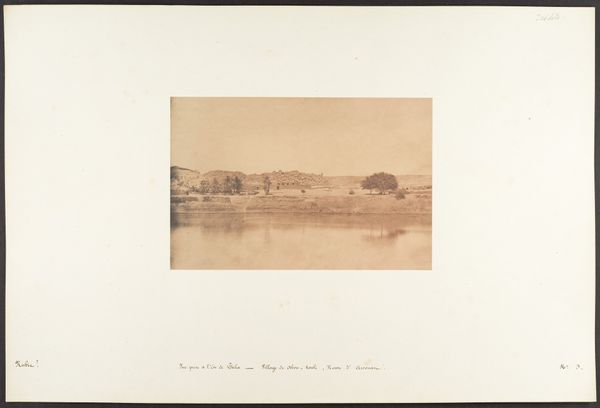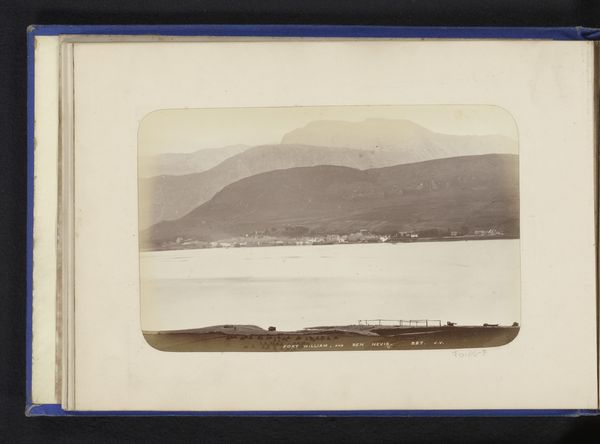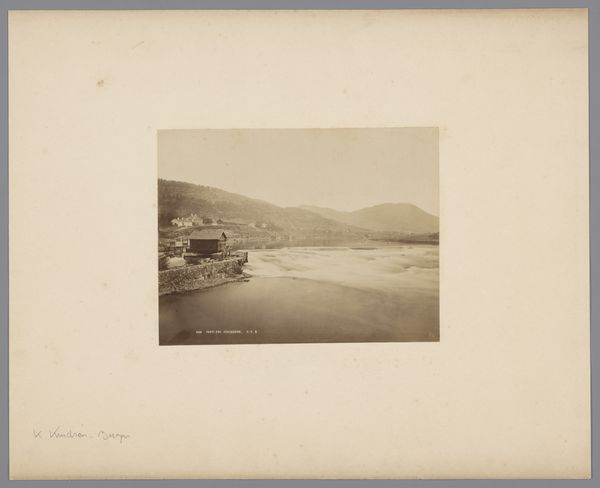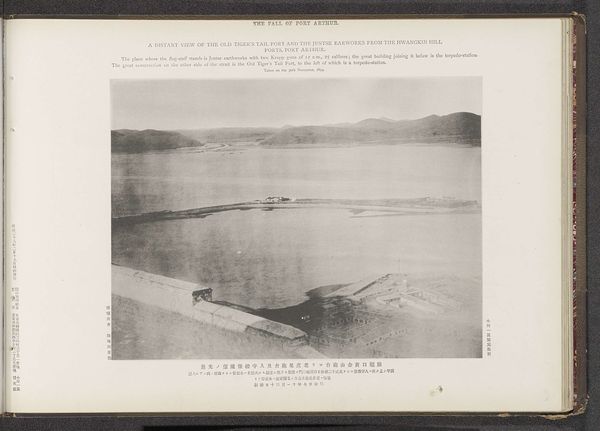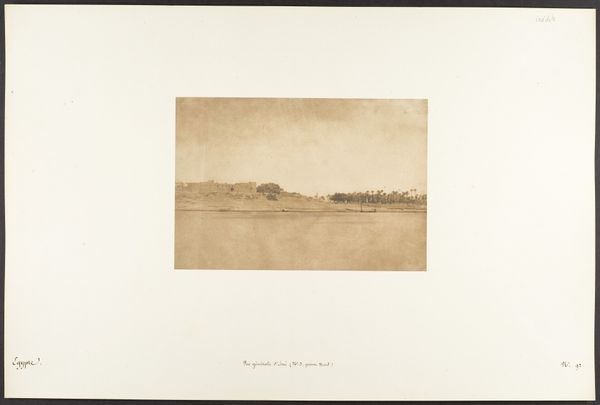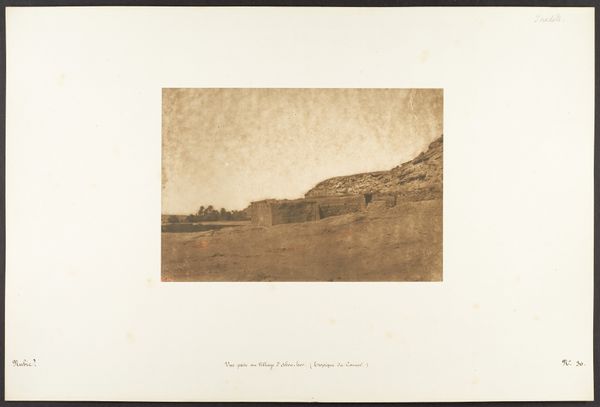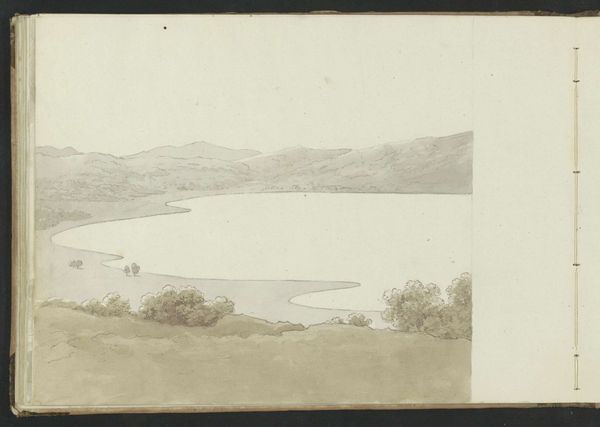
Vue prise au Sud-Est de Philae - Cherk-el-Hesseh 1849 - 1850
0:00
0:00
print, photography, gelatin-silver-print
#
boat
# print
#
landscape
#
ancient-egyptian-art
#
photography
#
romanticism
#
gelatin-silver-print
Dimensions: Image: 6 in. × 7 15/16 in. (15.3 × 20.1 cm) Mount: 12 5/16 × 18 11/16 in. (31.2 × 47.5 cm)
Copyright: Public Domain
Curator: Ah, the serenity! I'm immediately transported. It's almost dreamlike. What do you see? Editor: Well, right off, I'm thinking about romanticism and the idealization of "the other." We’re looking at "Vue prise au Sud-Est de Philae – Cherk-el-Hesseh" – a gelatin silver print by Maxime Du Camp, taken sometime between 1849 and 1850. It's a landscape, yes, but also an artifact of colonial gaze. Curator: A gaze, indeed! The tonal range in this early photograph is so subtle, so ethereal. I am really appreciating the flat water surface and the desert hills behind, this is quite sublime. There is not a lot of depth and tonality but somehow I feel completely drawn to this far away exotic location. Editor: And that’s exactly the point, isn’t it? Egypt becomes a stage for European fantasies. Look at the boats; they are rendered as almost diminutive against the immensity of the landscape. This image reinforces a sense of European power and domination through its visual construction. It subtly communicates: “Look what we have discovered!” Curator: Hmm, yes, that does cast a shadow. Yet, there is a part of me that yearns for the pure aesthetic experience. Look at the way the light dances on the water! It's timeless, beyond political considerations, don’t you think? Editor: I appreciate the dance, sure. But to divorce it from the context of its creation, of Du Camp's involvement with Flaubert’s journey, is to miss a critical layer. These images shaped European perceptions of the East, fueled Orientalism, and legitimized colonial ambitions. Can we really ignore the power dynamics inherent in that gaze? Curator: I suppose not. Perhaps beauty and politics are forever intertwined. That doesn’t negate the initial, purely sensory response though, does it? This image really makes me ponder about my response towards far away landcapes and exotic sceneries and how the colonial times and views shaped me to a certain extent. Editor: Agreed. Recognizing that complexity is where we move beyond a passive appreciation and toward a more informed, critically engaged experience. It asks us to confront the legacy of these images and what they continue to tell us about power, representation, and desire today.
Comments
No comments
Be the first to comment and join the conversation on the ultimate creative platform.
